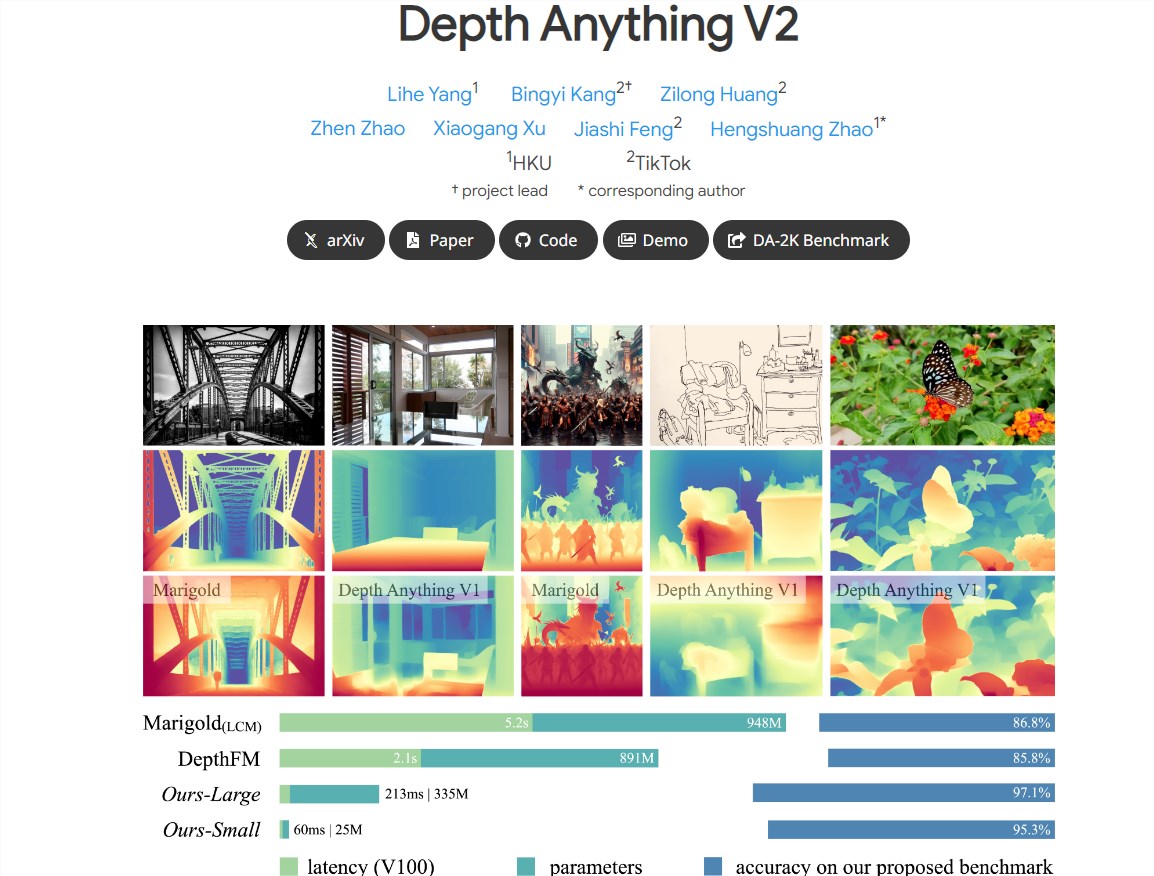ByteDance recently released a new generation of depth model, Depth Anything V2, which has made a significant breakthrough in the field of monocular depth estimation. Compared with the previous generation, the V2 version has been greatly improved in terms of detail accuracy, robustness and efficiency, and its speed is more than ten times faster than the model based on Stable Diffusion. The progress of this technology is not only reflected in the optimization of the model itself, but also in its innovative training methods, which bring new possibilities to the field of computer vision. The article details the key features, training methods and wide range of application scenarios of Depth Anything V2, allowing us to gain an in-depth understanding of the advancement of this technology.
News from ChinaZ.com on June 14: ByteDance has released a new generation of Depth Anything V2 depth model, which has achieved significant performance improvements in the field of monocular depth estimation. Compared with the previous generation Depth Anything V1, the V2 version has finer details and stronger robustness, while also significantly improving efficiency, more than 10 times faster than the Stable Diffusion-based model.

Key features:
Finer details: The V2 model is optimized in detail, providing finer depth predictions.
High efficiency and accuracy: Compared with models built based on SD, V2 has significantly improved efficiency and accuracy.
Multi-scale model support: Provides models of different scales with parameters ranging from 25M to 1.3B to adapt to different application scenarios.
Key practices: Improved model performance by replacing real images with synthetic images, expanding teacher model capacity, and using large-scale pseudo-annotated images to teach student models.
Three key practices to improve model performance:
Use of synthetic images: All annotated real images are replaced with synthetic images, which improves the training efficiency of the model.
Expanded teacher model capacity: By expanding the capacity of the teacher model, the generalization ability of the model is enhanced.
Application of pseudo-annotated images: Use large-scale pseudo-annotated real images as a bridge to teach student models and improve the robustness of the model.
Support for a wide range of application scenarios:
To meet the needs of a wide range of applications, researchers provide models at different scales and leverage their generalization capabilities for fine-tuning by metric depth labels.
A diverse evaluation benchmark containing sparse deep annotations is constructed to facilitate future research.
Training methods based on synthetic and real images:
The researchers first trained the largest teacher model on synthetic images, then generated high-quality pseudo-labels for large-scale unlabeled real images, and trained student models on these pseudo-labeled real images.
The training process uses 595K synthetic images and 62M+ real pseudo-labeled images.
The launch of the Depth Anything V2 model demonstrates ByteDance’s innovative capabilities in the field of deep learning technology. Its efficient and accurate performance characteristics indicate that the model has broad application potential in the field of computer vision.
Project address: https://depth-anything-v2.github.io/
All in all, the emergence of the Depth Anything V2 model marks a significant leap forward in monocular depth estimation technology. Its high efficiency, accuracy and wide application prospects give it huge development potential in the field of computer vision in the future, and it is worth looking forward to its implementation in more application scenarios.